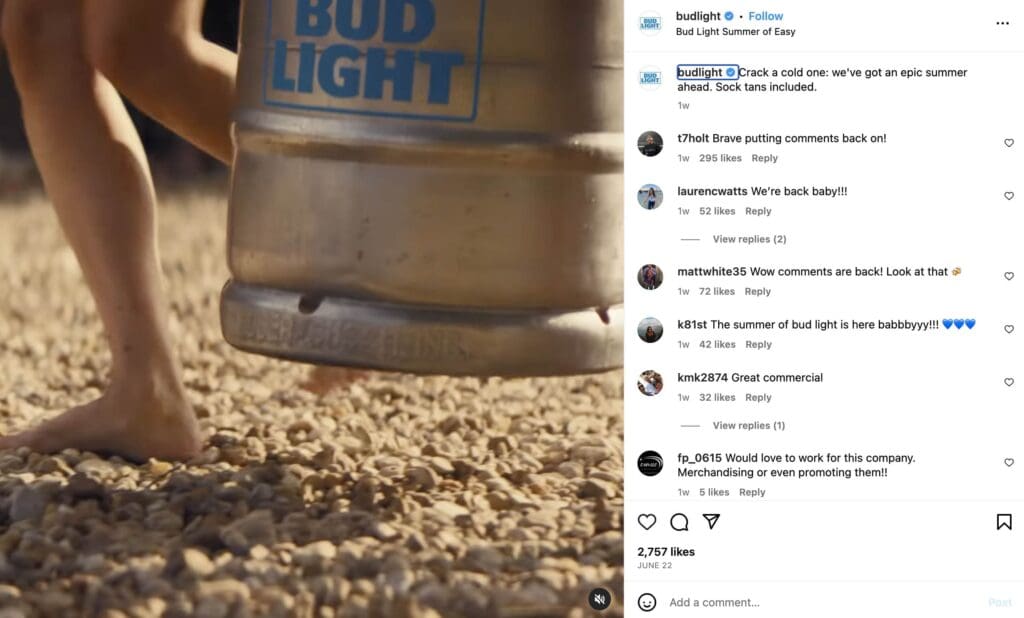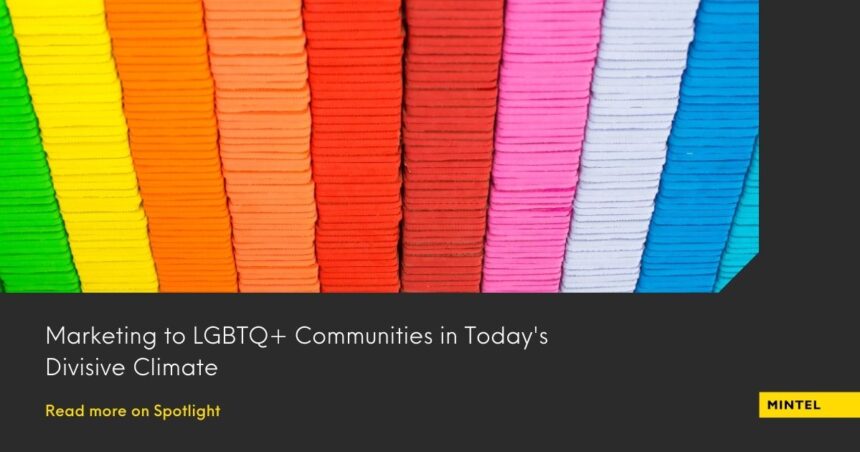Navigating Pride and Potential Brand Backlash
Brand participation in LGBTQ+ Pride Month has been on the rise for the past 10 years. Brands across nearly every category have found ways – both successfully and unsuccessfully – to engage in annual Pride celebrations. Brands’ interest in appealing to LGBTQ+ consumers is not surprising; as of 2022, an estimated 7.2% of the US population identifies as LGBTQ+, a count that has more than doubled in the past 10 years. Furthermore, nearly half (49%) of the total population has a family member or loved one who identifies as LGBTQ+. It’s a significant and growing consumer audience, but targeting this population also comes with great responsibility to authentically represent and protect LGBTQ+ communities.
In recent months we’ve seen extreme attacks hone in on companies and brands expressing their support for the LGBTQ+ community. Bud Light, Target and The North Face are just a few brands that have recently experienced consumer protests and backlash. While more than 60% of LGBTQ+ consumers and their loved ones feel the community needs brand support and allyship more than ever, the spike in brand backlash has many companies questioning or even downplaying their Pride marketing efforts this year.
Leveraging insights from the recent Understanding LGBTQ+ Communities Report as well as previous LGBTQ+ consumer research, Mintel has created a set of best practices for brands looking to appeal to LGBTQ+ communities in today’s divisive climate:
1. Establish why your brand is targeting LGBTQ+ communities
Brands that can meaningfully support the community have the opportunity to win the loyalty and trust of this growing population. However, marketing to LGBTQ+ consumers should be thought of as a long-term brand commitment; as such, companies need to decide if being an LGBTQ+ ally is right for their brand and why. One-off, annual marketing schemes that simply acknowledge Pride is bandwagon marketing which opens a brand up to backlash from both LGBTQ+ communities and anti-LGBTQ+ groups.
Instead of box-checking exercises, brands need to agree on a company-wide decision on whether to be an LGBTQ+ ally or not. This requires companies to think through if supporting the LGBTQ+ community fits with the brand’s identity, the brand’s values, and the brand’s core consumers. Companies need to ensure that LGBTQ+ allyship is reinforced by both internal and external policies. Understanding how and why LGBTQ+ allyship aligns with a brand is the first line of defense against naysayers and consumer backlash.
2. Marketing strategies need to be thoughtful and thought-through
Content and communications targeting LGBTQ+ consumers should be heavily vetted prior to launching. Brand teams need to think through how the proposed marketing activation aligns with the brand’s product or service. How does the strategy seamlessly link the brand’s values and purpose with LGBTQ+ communities?
It’s also crucial for brands to remain cognizant of how they are representing the LGBTQ+ community. The brand should ask ‘How does this marketing activation benefit the LGBTQ+ community?’ Does the content perpetuate stereotypes or does it help to represent and normalize authentic LGBTQ+ experiences? A key aspect of this step is ensuring that brand teams are representative of the LGBTQ+ community and guided by reliable consumer insights.
Furthermore, brands should not be afraid to start small; too many times brands go all-in on their first attempt at LGBTQ+ marketing, and the efforts ultimately feel out of left field. Instead, more brands should consider starting slowly but meaningfully, building their efforts over time. This will help prove the brand’s long-term authenticity and establish trust among LGBTQ+ consumers.
3. Prepare for all possible scenarios
In light of the volatility of LGBTQ+ sentiment in the US, prior to launching new LGBTQ+ marketing efforts, brands need to be prepared for any and all possible reactions. This also means staying up-to-date on current events impacting the community in order to fully understand the lay of the land; are there any recent events or cultural occurrences that may impact how your brand’s campaign could be received? If there are concerns about a brand’s strategy feeling inappropriate for the current climate, do not be afraid to pivot.
Brand leadership and marketing teams should also proactively consider all potential consumer backlash and be prepared to respond. Brand responses should stand by the company’s decision to market to LGBTQ+ communities and explain why the strategy aligns with the brand. Caving or giving in to backlash will not only alienate a brand further from consumers on both sides of the issue, but it also effectively normalizes and encourages more attacks against marginalized groups.

To find out more about this topic and what your brand should focus on for next year’s Pride Month, please reach out today.


 So for the second year in a row we’re hosting Summer of Pride together with @pattiegonia (they/she/he) to celebrate you and all the beautiful ways you get outside. More info + registration link in bio.
So for the second year in a row we’re hosting Summer of Pride together with @pattiegonia (they/she/he) to celebrate you and all the beautiful ways you get outside. More info + registration link in bio. 





